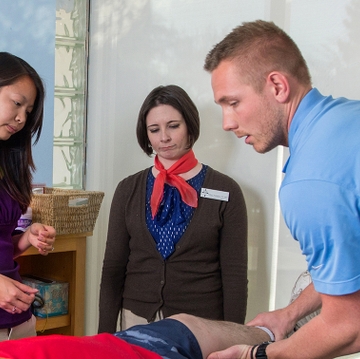
Hurt vs. Injured
What is the difference between the two?
Am I just hurt or am I injured? Is this something I can push through it or do I need to get further evaluation?
Those could be some common questions after you tweak something or land wrong while exercising, or even while just doing everyday things.
It is important to understand there is a difference between being hurt and injured.
"One of the big distinguishing factors is often that with an injury, there is an actual loss of function," said Rebecca Dutton, MD, assistant professor in the Department of Orthopedics & Rehabilitation at The University of New Mexico and one of the doctors for UNM Lobo athletics.
"It's something perhaps you are either avoiding doing or are unable to do because of that injury. Whereas most of the time, when people are more of a 'hurt,' they are able to function around that a little bit more seamlessly."
Dutton - who specializes in the diagnosis and non-operative management of musculoskeletal and sports-related injuries of the shoulder, elbow, wrist, knee, hip and ankle - said one of the factors used to distinguish the two is time.
"If there is a sudden, kind of acute, symptom that can clearly be related to a triggering or inciting event, that is a little more concerning for injury," Dutton said. "Even in the context of an overuse type of pattern, usually people are able to point to a pattern or a change in pattern that has sort of led to the development of that overuse injury."
Dutton said it's important to know how symptoms are changing over days or weeks, or even if they have become chronic. Are the symptoms getting better or have they completely plateaued -- or even worse, are they getting worse?
"I think when you really see that pain kind of plateau or even start to get worse, that is another indicator of injury," Dutton said.
Another thing to look for is whether there are any associated symptoms. Dutton said a hurt tends to be isolated, while with an injury it's not uncommon to see associated swelling, redness, inflammation, bruising or some kind of associated symptom that indicates that perhaps there is actual damage to a tissue.
Dutton added it's also extremely important to listen to your body.
"I think there is a level of pushing through that is acceptable when dealing with the routine aches and pains of exercise," Dutton said. "But if the body is telling you that it needs a break or it needs to stop, that is definitely something to listen to and be cautious of."
